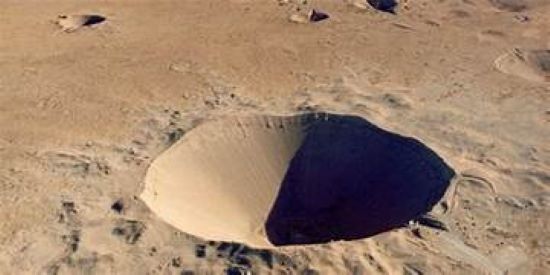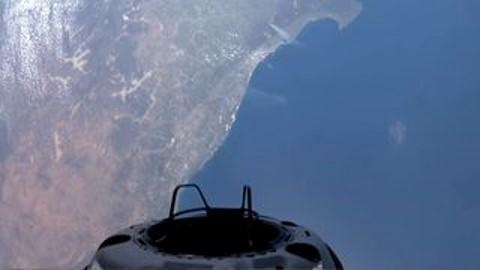Where Do Future Lunar Colonizers Train? In Nevada

When the Soviets and Americans were in the middle of the Cold War race to design and test nuclear weapons, the U.S. used a site northwest of Las Vegas to test atomic weapons. That site is the Nevada National Security Site (NNSS) where you can find the world’s largest human-made crater spanning 390 metres (1,280 feet) in diameter. Called the Sedan Crater it was produced by an underground nuclear explosion in 1962 and is one of hundreds (see image above) to be found at the NNSS.
Today, NNSS provides a full-scale place for testing what lunar exploration will be like at the Moon’s South Pole when the Artemis astronauts land there. It is 65 miles northwest of Las Vegas and saw 928 nuclear tests of which 100 were above ground while the rest were done underground beginning in 1963 with the signing of the Limited Test Ban Treaty between the Soviet Union and the United States.
Before the Apollo landings on the Moon, NASA sent crews to train and test equipment at the site. They were sufficiently impressed by how easy it was for them to do lunar extravehicular activities during the Apollo missions.
Now for Artemis, astronauts are back at the Sedan Crater and its surroundings. Tara Bartlett, a scientist working at the NNSS describes its unique capabilities. “We can support large field operations in and around these craters.”
The site features a tower called Icecap that stands 46.3 metres (152 feet) tall, a similar height to the Starship Human Landing System (HLS) that will be used for the first Artemis mission returning to the lunar surface. The tower used to observe nuclear explosions will now serve a new purpose providing an elevated view of equal height to the one the astronauts will see upon landing on the Moon. From the HLS, astronauts can survey the surrounding craters at the Lunar South Pole experiencing something similar to their NNSS training.
Nick Downs is a geologist at NNSS. He sees Sedan Crater and its surroundings as a great place to train future Artemis mission crews to do quality lunar field geology. Downs states, “This is a good place to test in a safe and controlled environment, and it’s better to test equipment here rather than when you’re on the Moon for the first time.”
If ever there was a good use of space, one formerly used to test bombs for Nuclear Armageddon, this is one.
Billionaire Spacewalk: Should We Get Excited?

Was there merit in the Polaris Dawn mission and the show SpaceX put on, a five-day romp into space with four astronauts taking a Dragon capsule to and from space? The mission gave us two highlights.
- It reached an orbital height greater than any previous human-crewed mission other than those done during the Apollo era.
- Two crew ventured outside the Dragon capsule for several minutes.
We don’t know how much the mission cost because the amount has never been publicly disclosed. Based on other crewed missions involving NASA and using similar SpaceX technology and equipment, the cost amounts to hundreds of millions.
SpaceX ran the mission but Jared Isaacman, a technology billionaire entrepreneur, paid for it in full. He was also part of the crew and holds bragging rights now as the first civilian to poke his head into the vacuum of space outside an orbiting spacecraft.
Polaris Dawn publicity stated the mission had two specific purposes: an engineering one to test a SpaceX-designed extravehicular (EVA) spacesuit that could become standard equipment on future space missions, the Moon and Mars. The second purpose was to establish bragging rights by setting a new Earth-orbit altitude record of 1,400 kilometres (870 miles) for a crewed spacecraft. The last time any human and flown this far from the planet was in 1972.
The Dragon capsule had to be modified to incorporate handrails outside the hatch (see image above) where two in the crew emerged from the hatch to hold on for a birds-eye view of Earth with no window in between. Isaacman’s extravehicular romp lasted 8 minutes.
To do this because the Dragon capsule wasn’t designed with an airlock, the spacecraft had to equalize the external vacuum of space through depressurization exposing all four crew who donned EVA suits.
Hundreds of millions were spent on what was largely a space stunt. I can think of better ways to spend my money for a 5-day tour.








